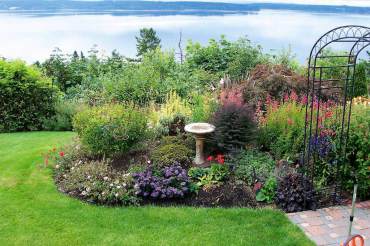
This isn’t about the design of a new garden; this is all about an existing one. As the garden ever changes, much can be said about how it grows and develops character. Then there are the spaces that do not age gracefully; the overhaul of a garden is a different approach than the construction approach to a blank canvas. There is adding, subtracting, mixing and bringing it all together; and then editing.
The word edit is not always a writer’s favorite thing to hear. Typically it means the removal of fractured sentences, wordy subjects and confusing jargon. But editing is good; it cleans up the text and clarifies the intent. Think in those terms for a garden.
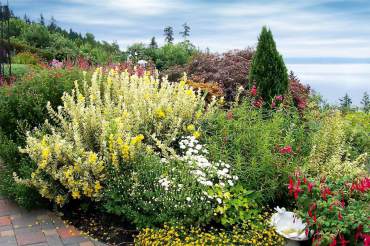
Gardeners with the tendency to need editing are plant collectors. Not the kind who travel vast lands for something novel, but those who swap plants with neighbors and haunt garden stores and sales. Plant collectors are much like quilters who collect fabric and knitters who collect yarn. They see a beautiful swatch of something with no specific project in mind; they just love the color or texture. Fabric and yarn collectors tuck their finds in boxes and bins, while plant collectors tuck theirs in anywhere there is open dirt in the garden.
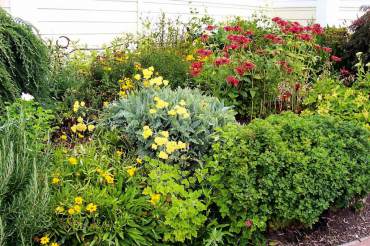 Years of planting this way is sometimes successful and sometimes the garden suffers from an identity crisis. The hodge-podge of it all creates lines that are blurred and the lure of the plant’s original beauty gets lost in the mix. Design has gone astray while chaos reigns. The good news: It is OK to be a plant collector; it is what makes gardens interesting. The bad news, sometimes we have to reign in the shopaholic, plant-swapping tendencies for a moment and get back to the basics of design and bone structure — so the collecting can be beauty, not chaos.
Years of planting this way is sometimes successful and sometimes the garden suffers from an identity crisis. The hodge-podge of it all creates lines that are blurred and the lure of the plant’s original beauty gets lost in the mix. Design has gone astray while chaos reigns. The good news: It is OK to be a plant collector; it is what makes gardens interesting. The bad news, sometimes we have to reign in the shopaholic, plant-swapping tendencies for a moment and get back to the basics of design and bone structure — so the collecting can be beauty, not chaos.
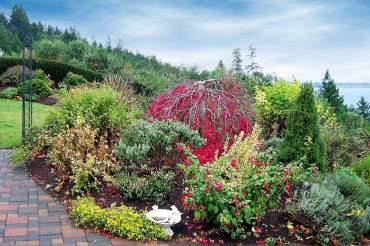
Winter is a good time to plan, evaluate, walk through and take notes. In a garden, busy spring and summer steals away time to take a diagnostic look at what is really going on.
Step by Step
Get into shape: Start by assessing the actual shape of the space. Will it need to be bigger or smaller, are the edges finished well or in need of recutting? Does it have a good focal point? Can it have a more interesting shape? Are the plants spilling over the edges? Look at how to refresh the outline.
Evaluate the hardscape: Remove the gnome statue and garden art at this point. Those artistic details are like putting the cherry on top of the ice cream sundae; do that after renovating. Large features like an arbor or permanent fixtures need to be evaluated for condition. If it is they are in a state of disrepair or falling over, fix them or remove them.
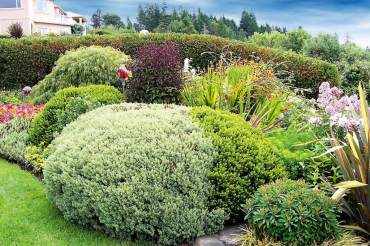
Rip out or revive: Decide which plants are staying and which ones are going. Consider the sluggy hostas and that “half alive” heather. Don’t hesitate to rip plants beyond their prime. Consider the value of replacement; is it really worth trying to get a plant back into shape? How long does it have to be ugly before you are tired of it?
Look at the aesthetics, not necessarily the particular plant variety. When plants overtake another to steal away shape, it is time to go. If a shrub crowds to the point of half killing another, remove it, or both if needed. If you have to shear down a plant every year to keep it from blocking a window, it needs to go.
Remember the old adage, “right plant, right place.” It will ring in your ears as you drag out the shovel. Plant removal can be hard, but tell yourself you are doing the right thing. The goal is to restore order but keep maturity too, so evaluate carefully. It may simply be a matter of removing one entire plant to allow the others around to have space rather than the rearrangement of everything. If pruning a plant is the approach, always prune carefully or get professional help. Look at natural growth habits and stick to those. A bad pruning job can cause irreparable damage to the shape and future growth of a plant.
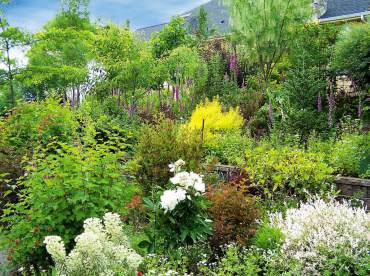
Evaluate and plan: After an evaluation for the good and bad, it is time to have a plan. Decide what the renovated areas should really be. Take a walk, pen in hand; sketch and write notes of areas that need new texture, color and repetition. Identify spaces that are empty and evaluate the underachievers. Look at what is staying and work around what is left behind. Keep in mind you are still the plant collector and that is a tough habit to break, so allow spaces to expand and creep out borders or create new ones for plant finds in the future.
Stick to principles of design: Start with the layers of the garden; the main, the supporting and the fillers. The main plants are the ones with the most drama. They have strong character that stands out and creates focus. The supporting plants are the ones that are chosen to complement the main plants. These tend to be shrubs and larger ornamental grasses. The fillers are the plants that fill in the gaps in-between the main and supporting roles of other plant choices. Fillers are typically perennials, ground covers and bulbs.
Mixed garden spaces have all the layers and also something for each month of the year. Choose plants that have interest in multiple seasons, such as a shrub that flowers in the spring, has beautiful fall color and an architectural branching habit. Evergreen plants also give year-round appeal.
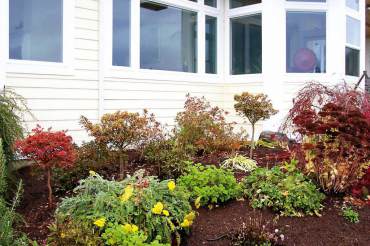 Consider bone structure: These are the elements that don’t disappear in seasons. Evergreens, hardscape and hedges all give “bones” to a garden. If a planting is truly a mixed bag and the only downfall is its eclectic mix, consider a low hedge to frame it. Much like a picture frame brings focus to the art it surrounds, the permanence of a low dwarf hedge around a bed can do the same. Tidy edging always makes mixed beds look better.
Consider bone structure: These are the elements that don’t disappear in seasons. Evergreens, hardscape and hedges all give “bones” to a garden. If a planting is truly a mixed bag and the only downfall is its eclectic mix, consider a low hedge to frame it. Much like a picture frame brings focus to the art it surrounds, the permanence of a low dwarf hedge around a bed can do the same. Tidy edging always makes mixed beds look better.
Just say no: No new plants, at least until you have a plan. New additions in the early stages of renovation can be more problematic than helpful. Don’t be tempted to purchase anything until you know what spaces are left and what elements of design are missing. When ready to buy, choose the correct variety of plants. If the space needs a dwarf plant, then choose a labeled dwarf variety. It never works out to try to make a plant fit the space by ongoing pruning or forcing a plant to do what you want it to do rather than what it genetically will do. Opt for plants for their graceful natural growth, not plants in need of habitual pruning. Know the cultural conditions like sun, shade and plant appropriately.
This article was first published in the Winter of 2009 print edition of the WestSound Magazine. Any discrepancies, omissions, or inclusions that seem incorrect are purely due to the age of this article. WestSound Magazine deemed this article useful and beneficial as a contribution to today's readership, and therefore is included in this site's online article archives. If you feel the content of this article is detrimental due to its age, please feel free to contact us to request removal or modification.



























Comments